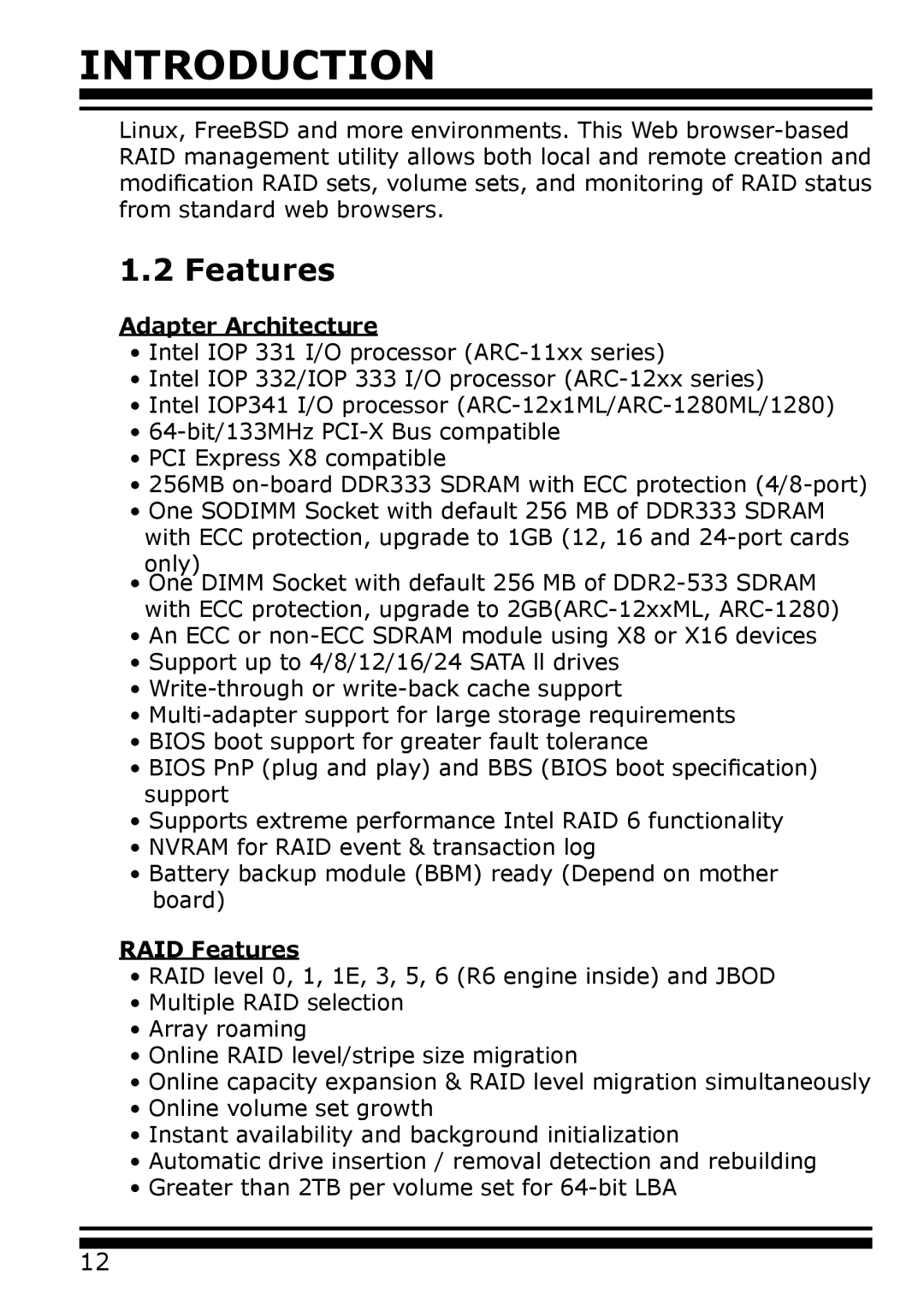
INTRODUCTION
Linux, FreeBSD and more environments. This Web
1.2 Features
Adapter Architecture
•Intel IOP 331 I/O processor
•Intel IOP 332/IOP 333 I/O processor
•Intel IOP341 I/O processor
•
•PCI Express X8 compatible
•256MB
•One SODIMM Socket with default 256 MB of DDR333 SDRAM with ECC protection, upgrade to 1GB (12, 16 and
only)
• One DIMM Socket with default 256 MB of
• An ECC or
• Support up to 4/8/12/16/24 SATA ll drives
•
•
• BIOS boot support for greater fault tolerance
• BIOS PnP (plug and play) and BBS (BIOS boot specification) support
• Supports extreme performance Intel RAID 6 functionality
• NVRAM for RAID event & transaction log
• Battery backup module (BBM) ready (Depend on mother board)
RAID Features
•RAID level 0, 1, 1E, 3, 5, 6 (R6 engine inside) and JBOD
•Multiple RAID selection
•Array roaming
•Online RAID level/stripe size migration
•Online capacity expansion & RAID level migration simultaneously
•Online volume set growth
•Instant availability and background initialization
•Automatic drive insertion / removal detection and rebuilding
•Greater than 2TB per volume set for
12
